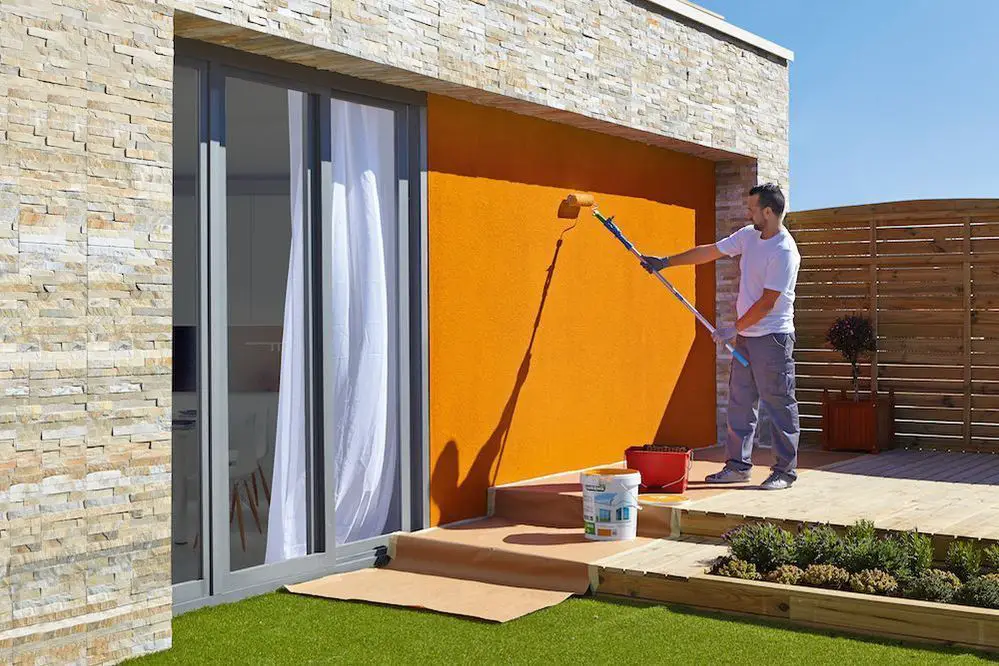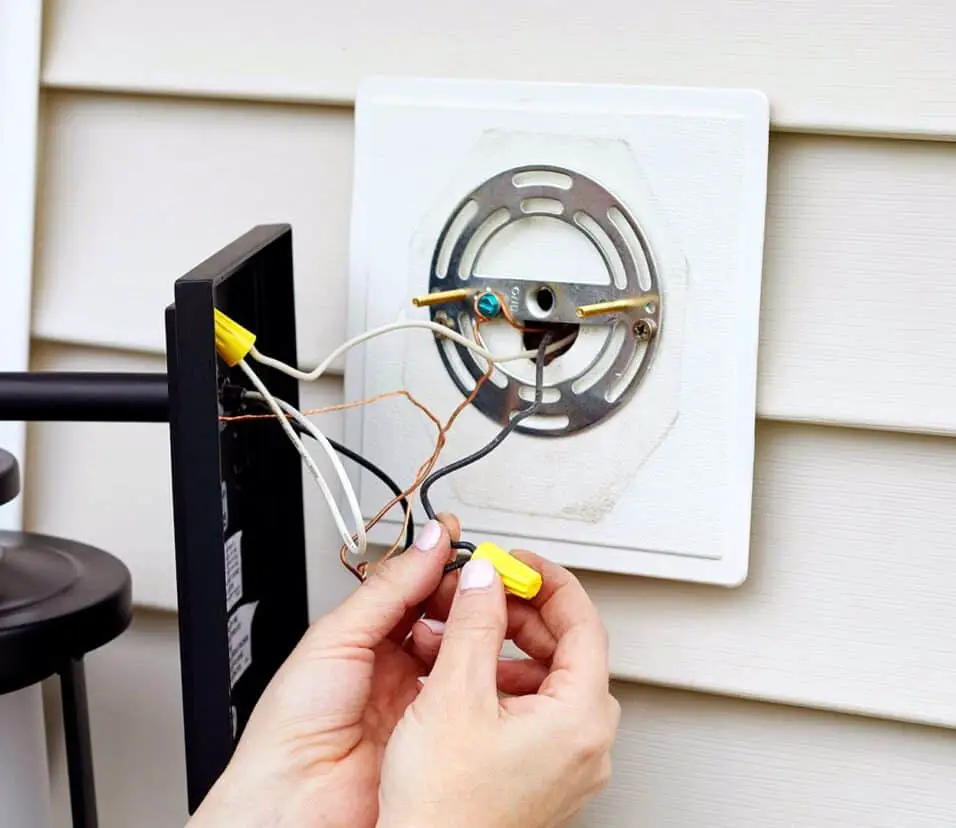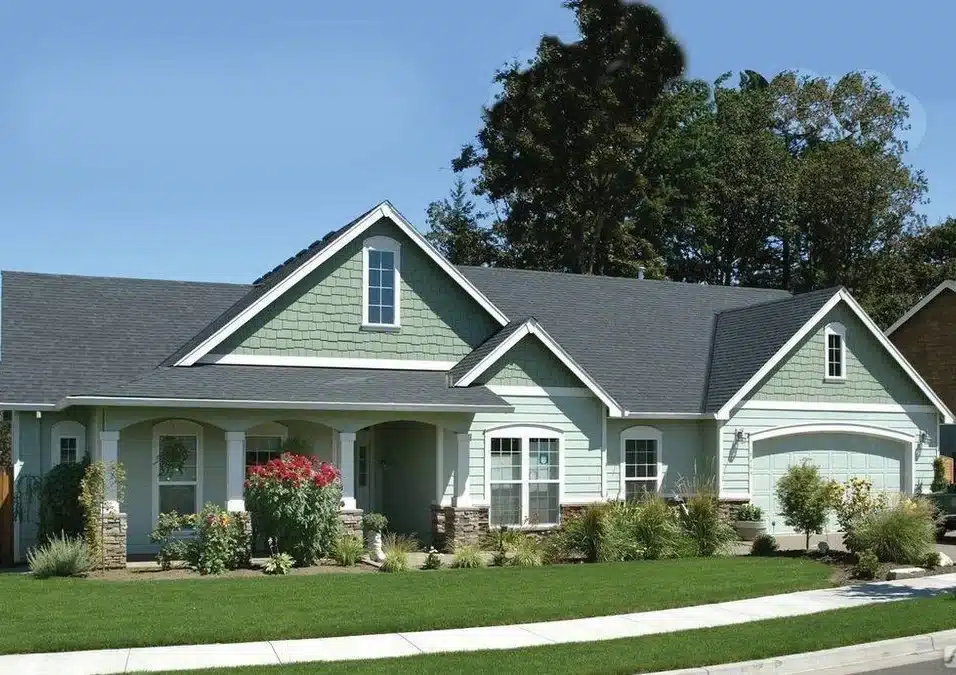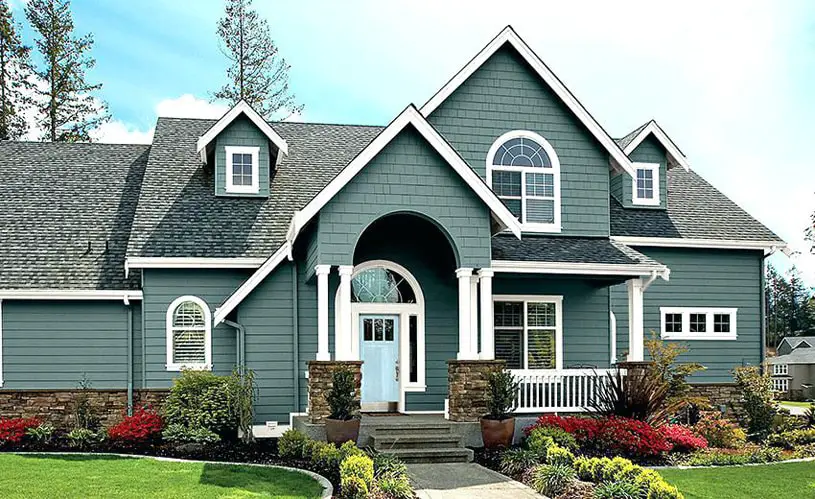Is It Better To Spray Or Roll Exterior Paint
Introduction
Is It Better To Spray Or Roll Exterior Paint: The choice between spraying and rolling exterior paint is a pivotal decision that significantly influences the outcome and durability of a paint job. As homeowners and professionals alike strive to achieve a flawless and long-lasting finish, the debate regarding the superiority of spraying versus rolling continues to intrigue and guide paint enthusiasts. This comprehensive analysis delves into the merits and drawbacks of each technique, equipping readers with valuable insights to make an informed choice for their next exterior painting project.
Spraying paint offers undeniable speed and efficiency, enabling large surfaces to be covered in record time. This method excels at achieving a smooth, even coat, especially on intricate surfaces with varying textures. Yet, challenges such as overspray control and the need for precise masking must be carefully considered. On the other hand, the traditional method of rolling paint color boasts its own set of advantages, particularly in terms of control and reduced overspray. It is often preferred for surfaces with imperfections, as the rolling motion can effectively cover uneven areas and ensure proper adhesion.
To determine the optimal approach, factors such as surface type, weather conditions, equipment availability, and desired finish must be weighed. This exploration navigates the nuanced terrain of exterior painting, offering a balanced view of both techniques and guiding readers towards a well-informed decision that aligns with their project goals.

Is it better to spray or roll exterior house paint?
Exterior Painting – Spray vs Rolling
When it comes to our exteriors we tend to use a sprayer because it’s more efficient, offers better coverage, and gives a more professional finished quality. That being said, it’s important that your painter can utilize both of these tools because that’s what they are – paint tools.
The choice between spraying and rolling exterior house paint depends on several factors, including the project’s scale, your level of expertise, and your specific goals. Each method has its advantages and disadvantages.
Spraying paint is often faster and more efficient, making it suitable for larger projects or when time is a critical factor. It can provide a smoother and more even finish, especially on surfaces with a lot of texture. However, spraying requires more skill to avoid overspray and achieve an even coat. It also demands meticulous preparation to protect surrounding areas from paint drift. Additionally, it’s generally recommended for new construction or large-scale repainting due to the amount of paint used.
Rolling paint, on the other hand, is a more straightforward method that is easier for DIYers to master. It’s suitable for smaller projects or touch-ups and works well on surfaces with less texture. Rolling may take more time compared to spraying, but it provides good coverage and control. It’s also less wasteful in terms of paint, as there’s no overspray. For many homeowners, rolling is the preferred method for painting their home’s exterior due to its accessibility and lower equipment costs.
Do professional painters spray or roll?
Many professional painters combine spray painting, roller painting and brush painting depending on the exact surface being painted. Starting with the brush, each method is faster than the previous one, but each method is less accurate than the previous one.
Professional painters often use a combination of spraying and rolling techniques, depending on the specific project and requirements. Experienced painters understand that both methods have their strengths and weaknesses, and they choose the one that best suits the situation to achieve the desired results.
Spraying is commonly used by professionals for large exterior painting jobs, such as painting the entire exterior of a house or a commercial building. It allows for faster coverage and can provide a smoother finish on large, relatively flat surfaces. Professional painters are skilled at minimizing overspray and ensuring an even coat.
Rolling, on the other hand, is often used for trim work, detailed areas, or smaller projects. It provides better control and precision when painting edges, corners, and surfaces with irregular textures. Professionals may also use rolling for the finishing touches or to blend areas that were sprayed.
Ultimately, the choice between spraying and rolling for professional painters depends on their expertise, the project’s scope, and the desired outcome. A combination of both techniques is often the most effective approach to achieve a high-quality, efficient paint job.
Which is better spray paint and roll paint?
Generally, rolling paint is the most beginner-friendly. Spraying paint takes a lot of prep but the time to paint is faster. A lot of heavy taping and masking is required to prevent overspray. A sprayer more consistently applies paint than a roller, too.
The choice between spray paint and roll paint depends on the specific circumstances of your painting project and your priorities. Neither method is universally superior; they have their own advantages and drawbacks.
Spray Paint:
- Advantages:
- Speed: Spraying is generally faster, making it suitable for large projects.
- Smooth Finish: Spraying can provide a smoother, more even finish on flat surfaces.
- Less Physical Effort: It requires less physical exertion compared to rolling.
- Disadvantages:
- Overspray: There can be overspray, which requires careful masking and protection of nearby surfaces.
- Skill Required: It demands more skill to achieve a consistent coat without streaks or uneven coverage.
- Paint Waste: Spraying can be more wasteful, as some paint doesn’t reach the surface.
Roll Paint:
- Advantages:
- Precision: Rolling allows for better control, making it ideal for edges, corners, and detailed work.
- Less Waste: There’s no overspray, reducing paint wastage.
- Easier for Beginners: It’s generally easier for DIYers and beginners to learn and use.
- Disadvantages:
- Slower: Rolling is typically slower, especially on larger surfaces.
- Texture Limitations: It may not provide as smooth a finish on textured surfaces.
- Physical Effort: Rolling can be physically demanding, especially on vertical surfaces.
In summary, there’s no one-size-fits-all answer to whether spray or roll paint is better. It depends on your project’s size, your level of expertise, and your desired finish. Many professionals use a combination of both techniques to capitalize on their respective strengths and achieve the best results for a given situation.
Is it good to spray paint a house exterior?
Using spray might be quicker to cover the area with paint but takes longer to set up and must be done for a long period of time to make it worthwhile. If you’re using water-soluble latex paint and have access to water then it takes just a couple of minutes and you’re good to go.
Spray painting a house exterior can be a good choice under certain circumstances, but it’s not always the best option. Whether it’s a good idea or not depends on various factors, including your goals, the condition of the surface, your skill level, and the time and resources available.
Advantages of spray painting the exterior of a house:
- Speed: Spray painting is significantly faster than rolling or brushing, which makes it suitable for large-scale projects like the entire exterior of a house.
- Smoother Finish: Spray painting can result in a smoother finish on flat surfaces, giving your house a more uniform appearance.
- Efficiency: It can be more paint-efficient, as there’s less waste compared to rolling.
However, there are also several considerations to keep in mind:
- Skill Requirement: Spray painting requires skill to achieve a consistent coat without streaks, drips, or overspray. It’s often best left to professionals or experienced DIYers.
- Preparation: Proper preparation is critical to avoid overspray on nearby surfaces and protect your landscaping, windows, and other elements.
- Texture: Spray painting may not work well on textured surfaces, as it can result in uneven coverage.
- Paint Type: The type of paint you use matters. Some paints are better suited for spraying, while others are designed for rolling or brushing.
Which is best for exterior painting?
Which Paint is Best for Outside Wall in India?
- Berger Walmasta Antifungal Exterior Wall Paint.
- Apex Ultima Weather Proof Exterior Paint.
- Berger Weather Coat Anti Dust Paint.
- 4 Paint Emulsion Nerolac.
- 5 Dr Fix It Raincoat.
- 6 Ace by Asian Paints.
- 7 Asian Paints Apex Weatherproof Paint.
- Dulux Weather Shield Max.
Determining the best method for exterior painting depends on various factors, including the nature of the project, the desired finish, and the available resources. Both spraying and rolling have their merits. Spraying is often favored for larger surfaces due to its speed and ability to cover uneven textures effectively. It can provide a smooth and consistent finish, particularly on surfaces with intricate details. However, it requires careful preparation to control overspray and protect surrounding areas.
On the other hand, rolling is known for its versatility and control. It works well on surfaces with imperfections and can offer a thicker coat of paint, enhancing durability. Rolling also allows for better adhesion on certain surfaces. While it might be slower than spraying, it tends to be more cost-effective and is generally easier for DIY enthusiasts to manage.
What is better sprayer or roller?
Paint spraying is fast and capable of covering rough textures that rollers can’t touch, yet the preparation work is extensive. Paint rollers have less prep work and the tools are less expensive, but it’s very labor-intensive.
The choice between a sprayer and a roller depends on the specific demands of the painting project. A sprayer excels in covering large areas quickly and achieving a uniform finish. It’s particularly useful for smooth surfaces where an even coat is crucial. However, a sprayer requires careful setup, including masking and protection of nearby surfaces, to prevent overspray.
Rollers, on the other hand, offer better control and can handle surfaces with irregularities or texture variations. They allow for better penetration into porous surfaces and can provide a thicker coat, which is advantageous for protection against the elements. Rollers are also more cost-effective, making them a popular choice for many homeowners. In essence, the decision boils down to the surface type, the desired finish quality, and the available resources.
Is it cheaper to spray or roll paint?
Rolling paint is the frugal homeowner’s choice.
Even renting a paint sprayer could cost you $40 a day. Then, if you choose to use a sprayer anyway, you’ll still need to buy more paint: Sprayers use about 33 percent more paint than rollers do. For a fraction of the cost, rolling paint is the budget-friendly way to go.
In terms of cost-effectiveness, rolling paint is generally considered cheaper than spraying. Spraying requires specialized equipment, such as a paint sprayer, which can be costly to purchase or rent. Moreover, there’s a need for additional supplies like drop cloths, masking materials, and cleaning solutions to manage overspray. These expenses can add up, especially for smaller projects.
Rolling, on the other hand, requires basic tools like rollers, brushes, and trays, which are relatively inexpensive and reusable. There’s also less setup involved, reducing the need for elaborate masking and protection measures. While rolling might be slightly slower than spraying, the cost savings often make it a more attractive option for many homeowners and DIY enthusiasts.
Is spray paint as good as paint?
A flawless finish
With a single coat of spray paint, you get the same result as 6 coats of paint applied by a brush; except no brush marks and no stray bristles. The need for fewer coats significantly reduces the effects of paint applied unevenly, making for a smooth finish, far less susceptible to chipping.
The comparison between spray paint and brush paint depends on the context and the specific attributes of each method. Spray paint can offer a smooth, even finish that’s hard to replicate with a brush. It’s especially useful for large surfaces or objects with intricate designs. Spray paint also dries faster and can cover uneven textures more effectively.
Brush painting, on the other hand, provides greater control and precision, allowing for detailed work and intricate designs. It’s also more suitable for smaller projects where the use of a sprayer might not be practical. Brush-applied paint can provide better adhesion and penetration, making it suitable for surfaces that require thorough coverage and protection.
Ultimately, whether spray paint is as good as brush paint depends on the desired outcome, the surface being painted, and the skills of the painter. Both methods have their strengths and can be used effectively depending on the project’s requirements.
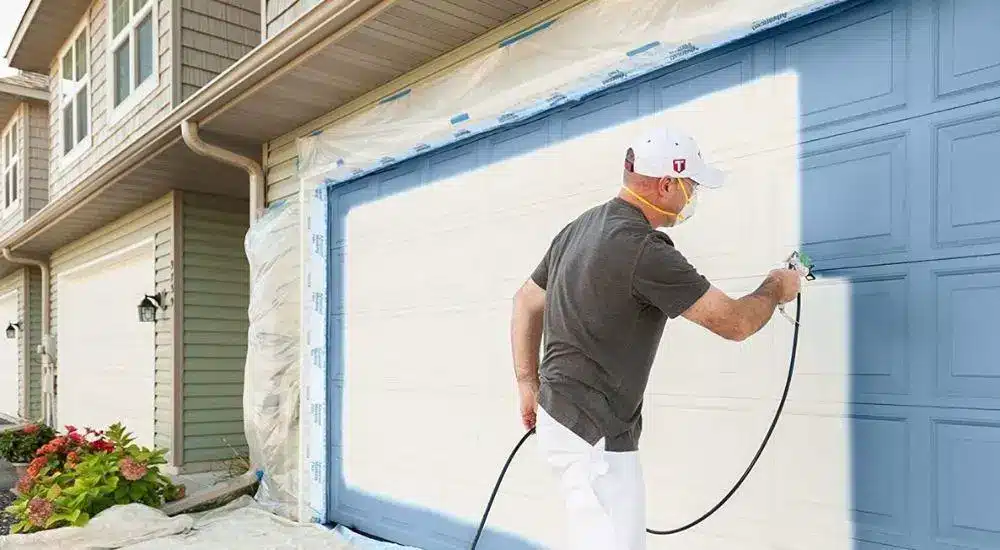
Conclusion
As we draw our brushes across the canvas of the great debate—spraying versus rolling exterior paint—it becomes evident that there is no one-size-fits-all answer. The choice between these application methods is influenced by a multitude of factors, each deserving careful consideration.
In the final strokes of this exploration, we find that the decision hinges on a delicate balance between efficiency, precision, and desired outcomes. Spraying offers a faster application, covering large surfaces swiftly, while rolling excels in providing a thicker, more even coat with better penetration into textured surfaces. However, it’s important to note that both techniques demand proper preparation, including cleaning, priming, and masking.
Furthermore, the type of surface, paint viscosity, weather conditions, and the level of control a painter seeks all come into play. A successful application method should align with the project’s scope and individual preferences, making the process as seamless as the finish itself.
In the end, tis not a verdict but rather a reminder that both spraying and rolling are essential tools in a painter’s repertoire. Whether aiming to achieve a flawless sheen or complete a task efficiently, understanding the nuances of each technique empowers both professionals and homeowners to make the right decision for their exterior house paint project. So, as the final stroke is placed, we leave you with the realization that the ultimate masterpiece lies in your hands—the choice between spraying and rolling, a decision that will breathe life into the walls that embrace your world.



